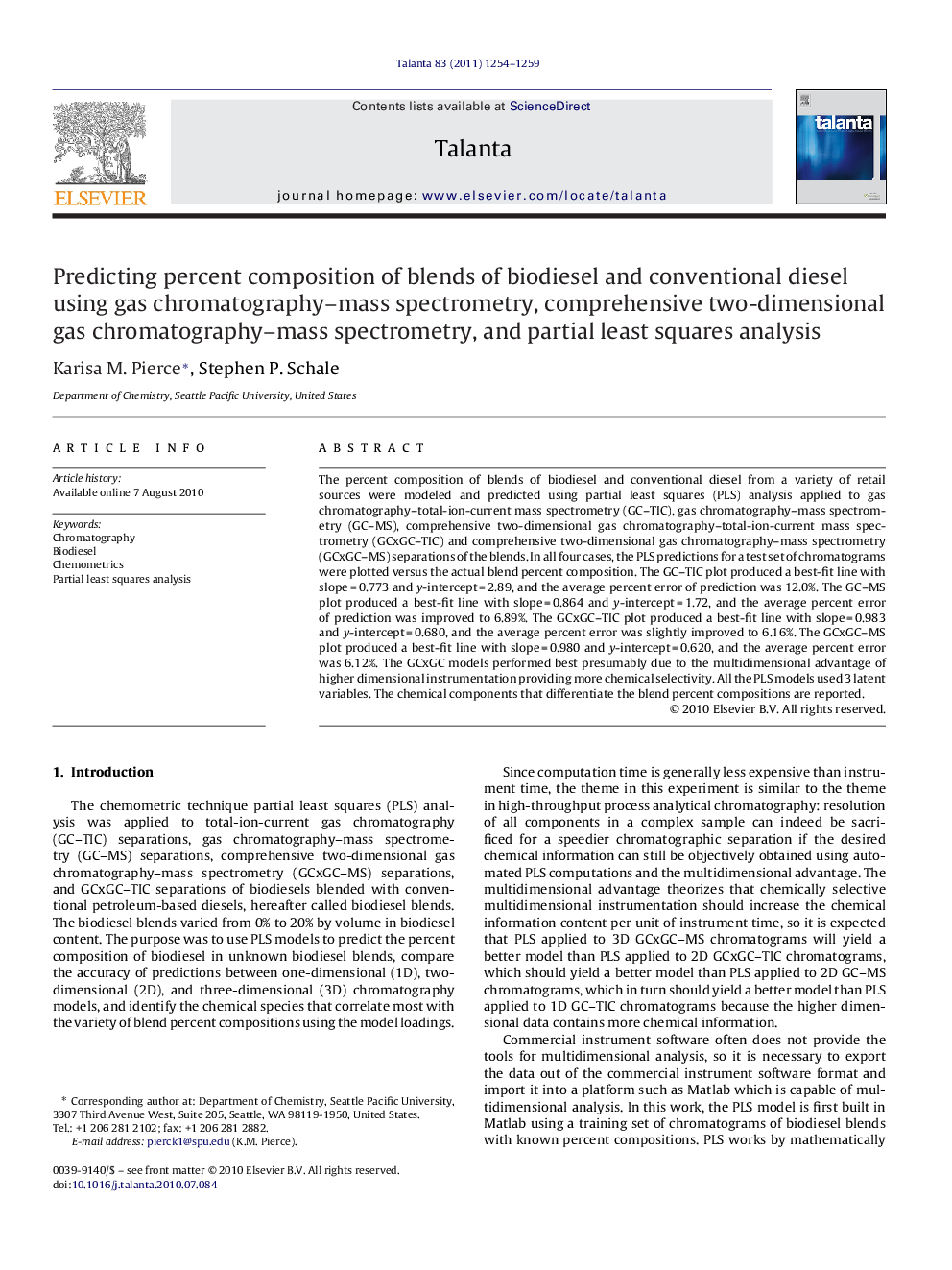| Article ID | Journal | Published Year | Pages | File Type |
|---|---|---|---|---|
| 10560693 | Talanta | 2011 | 6 Pages |
Abstract
The percent composition of blends of biodiesel and conventional diesel from a variety of retail sources were modeled and predicted using partial least squares (PLS) analysis applied to gas chromatography-total-ion-current mass spectrometry (GC-TIC), gas chromatography-mass spectrometry (GC-MS), comprehensive two-dimensional gas chromatography-total-ion-current mass spectrometry (GCxGC-TIC) and comprehensive two-dimensional gas chromatography-mass spectrometry (GCxGC-MS) separations of the blends. In all four cases, the PLS predictions for a test set of chromatograms were plotted versus the actual blend percent composition. The GC-TIC plot produced a best-fit line with slope = 0.773 and y-intercept = 2.89, and the average percent error of prediction was 12.0%. The GC-MS plot produced a best-fit line with slope = 0.864 and y-intercept = 1.72, and the average percent error of prediction was improved to 6.89%. The GCxGC-TIC plot produced a best-fit line with slope = 0.983 and y-intercept = 0.680, and the average percent error was slightly improved to 6.16%. The GCxGC-MS plot produced a best-fit line with slope = 0.980 and y-intercept = 0.620, and the average percent error was 6.12%. The GCxGC models performed best presumably due to the multidimensional advantage of higher dimensional instrumentation providing more chemical selectivity. All the PLS models used 3 latent variables. The chemical components that differentiate the blend percent compositions are reported.
Related Topics
Physical Sciences and Engineering
Chemistry
Analytical Chemistry
Authors
Karisa M. Pierce, Stephen P. Schale,
